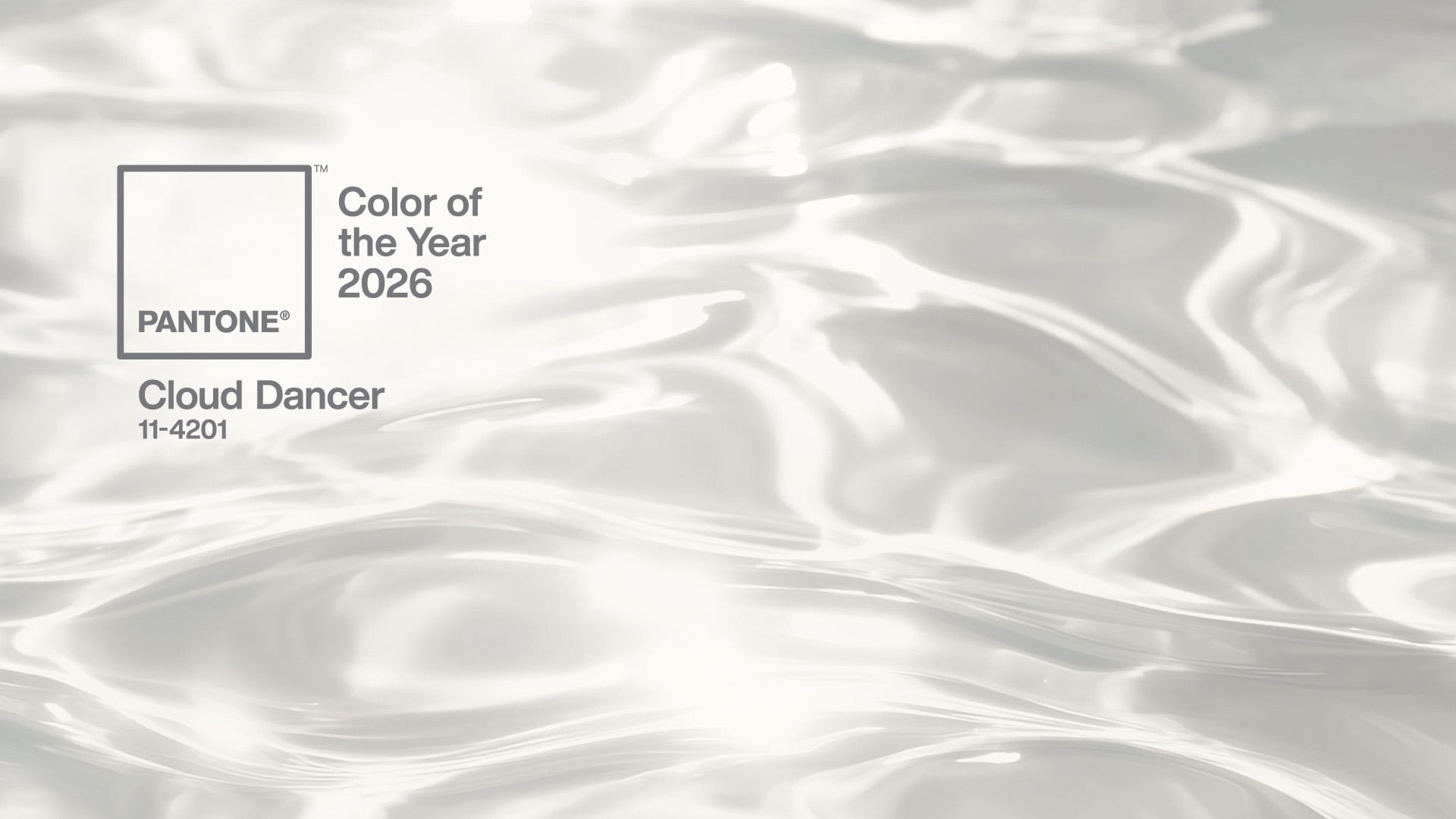Inside the inspirational sketchbook of picture book artist Valerya Milovanova
How this illustrator mixes traditional and digital media, including Procreate, in her art.
Valerya Milovanova is a UK-based illustrator who combines traditional materials with digital media like Procreate to make fun and heartwarming illustrations. She also loves screen printing, monoprinting and RISO techniques to enhances her storytelling.
Before we go on, and if you're inspired by Valerya, then read our list of Procreate tutorials to get started in this app, and our guide to the best iPads for artists. Read our xTool Screen Printer review too, for a device to get started in this craft.
Back to Valerya, and she uses her sketchbooks in an "unconventional" way. They're more of a tool to achieve unique and unexpected textures and brushstrokes that are then transferred to the Procreate app. All her illustrations begin on paper, where she feels more free to experiment and assists happy accidents.
"I graduated from the University of Hertfordshire's Illustration course in 2023 and applied to several picturebook illustration agencies seeking representation. Advocate Art has responded quite promptly and I have been working with them for almost two years since," shares Valerya. Take a look at Valerya's work on her website.
She adds: "I have also participated in several illustration competitions during my studies, such as the Batsford Prize, and later that year the Unpublished Picturebook showcase. Being shortlisted for those awards helped me kickstart my career and opened a path for new opportunities."
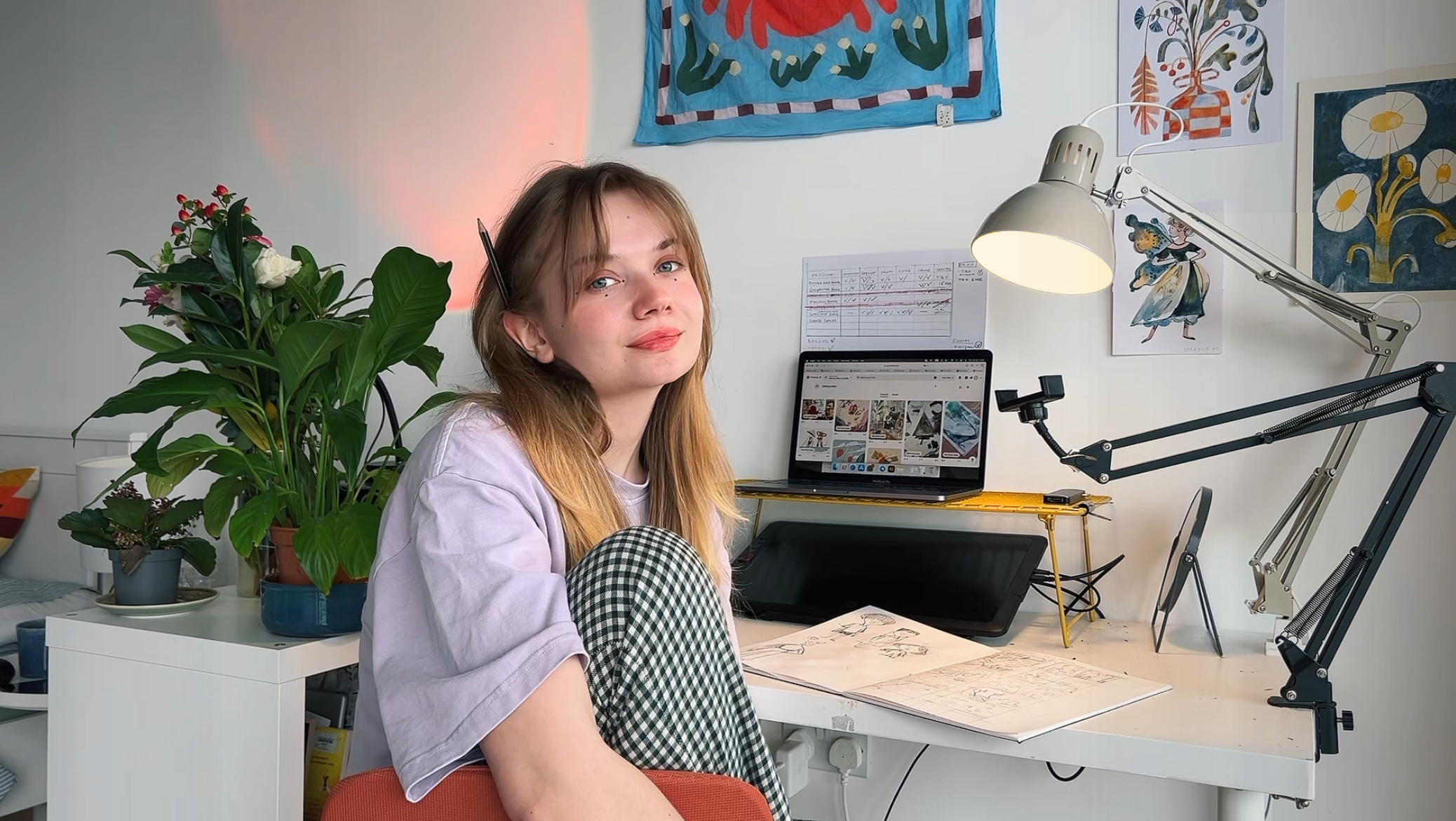
I ask Valerya about her distinctive process of starting illustrations in her sketchbook and then finishing them in Procreate.
"I usually start with a physical drawing on paper with watercolour, gouache, charcoal pencils, and sometimes ink," she says.
Daily design news, reviews, how-tos and more, as picked by the editors.
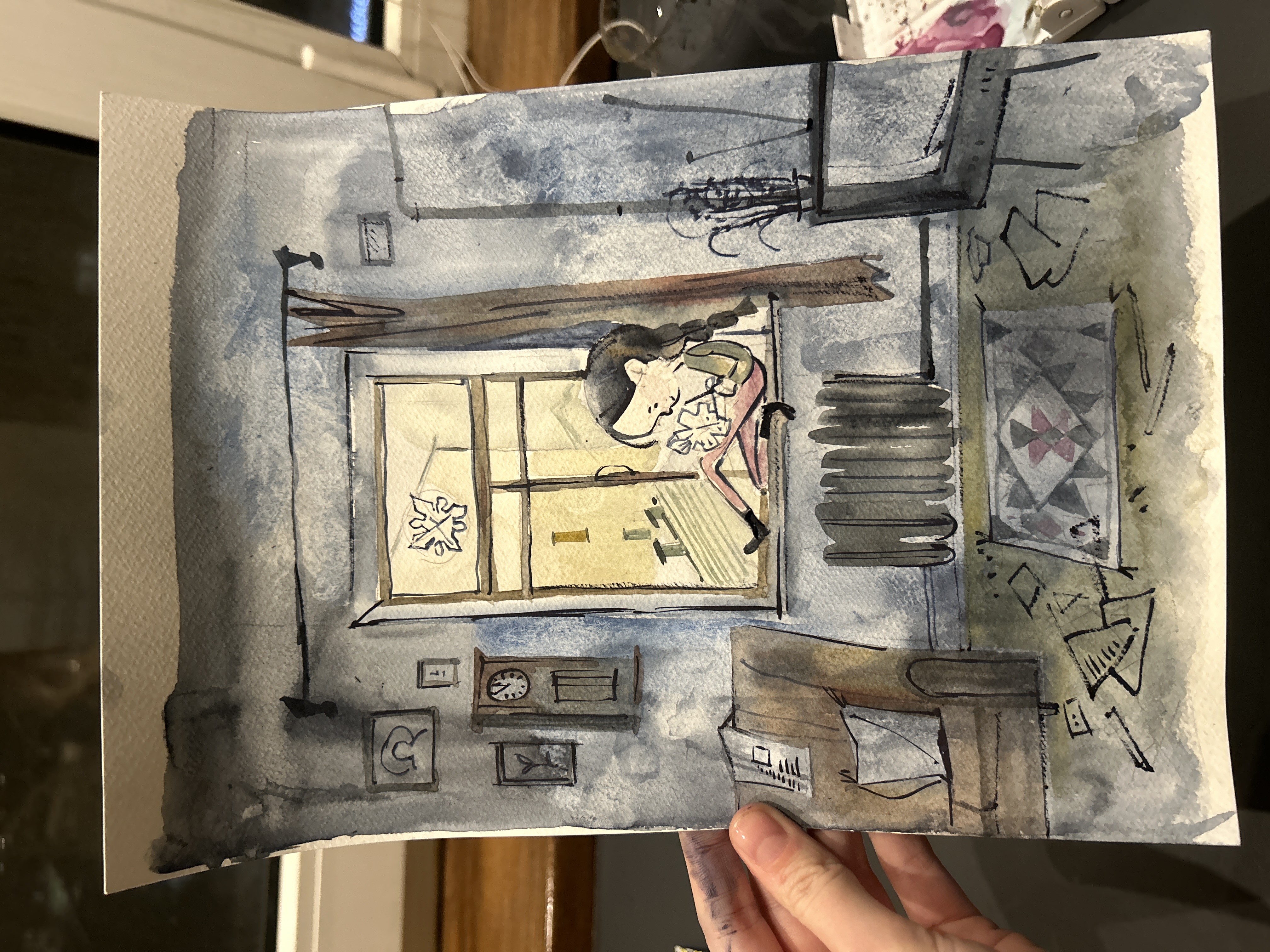
She adds: "The digital process for me consists of colour editing (through curves and colour balance in Procreate) and then I draw over the painting with digital brushes. And if I start with a black and white ink painting, I first colour it to achieve the desired look with Multiply and Overlay layers."
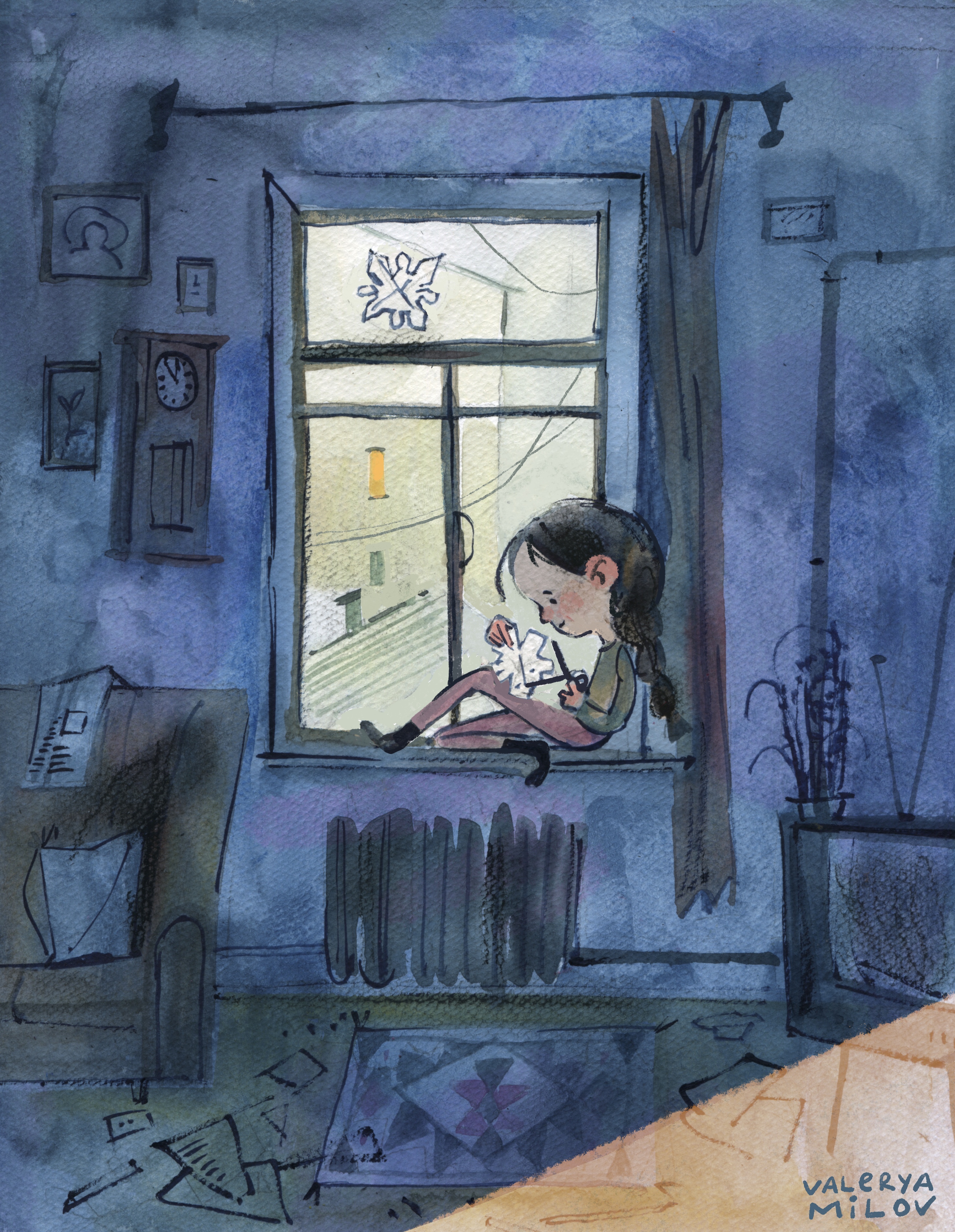
Valerya specifies: "My favourite brush is definitely the Freycinet Brush from the drawing category – I use it basically for everything, the literary and the colour, it has great texture and mixes perfectly with the watercolour texture. I almost just recently started making my own brushes from my watercolour scans, which helps achieve a cohesive look."
I ask her to point out the main aspects she focuses on in the traditional stage, "Texture, composition, values, and colours are the most important ones for me," she says.
She continues: "The latter could of course be edited digitally, but I still like to think about how colours interact with each other and how they blend creating smooth gradients. And I try to not make the traditional paintings too polished – so there is some looseness and life left in them. I don't want to overwork them, there is beauty in imperfection!"
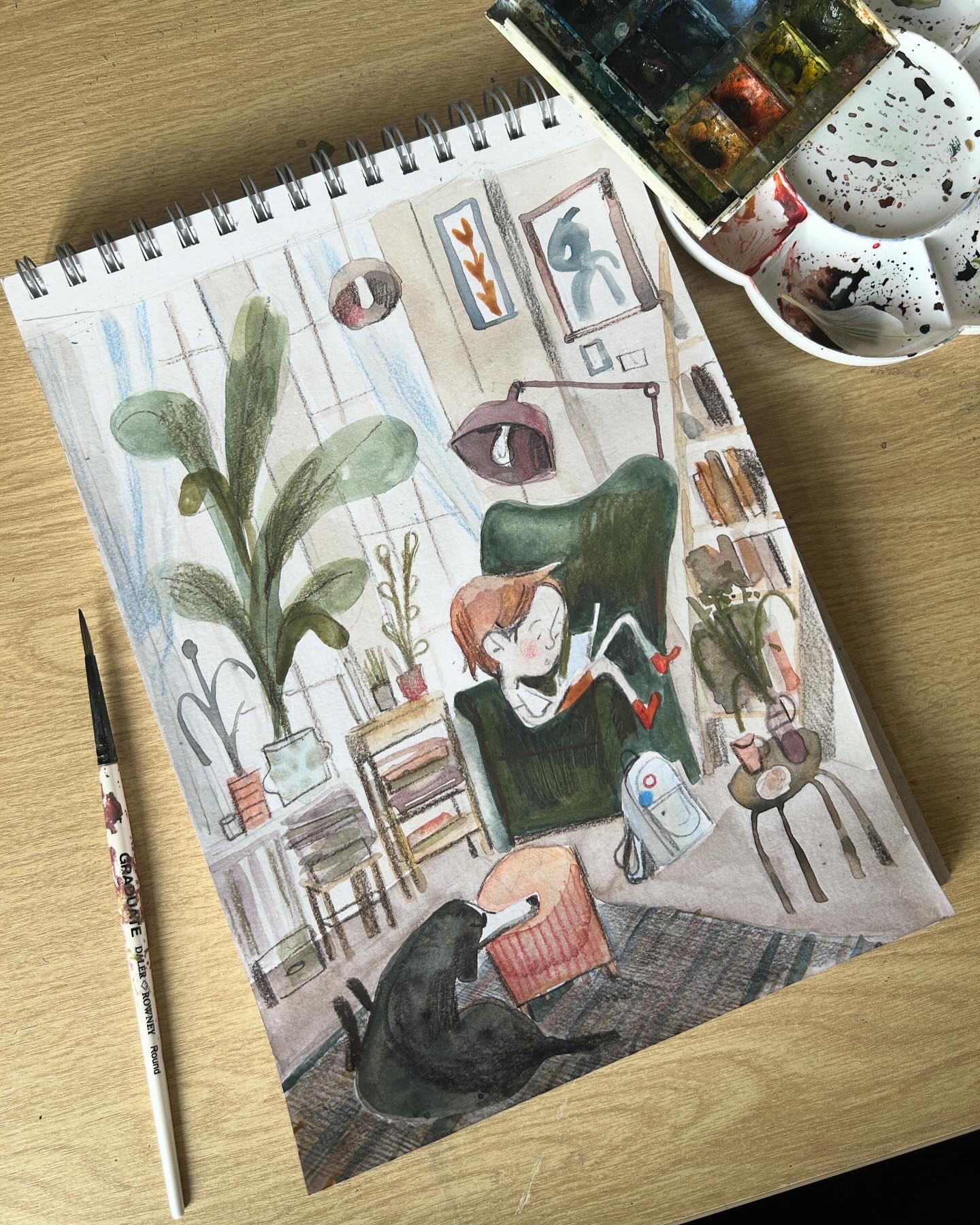
Since texture is very important for Valerya, I ask her what combination of tools and media allows her to achieve it, and she replies, "Watercolour, ink, charcoal, coloured pencils, and gouache (still testing it out)".
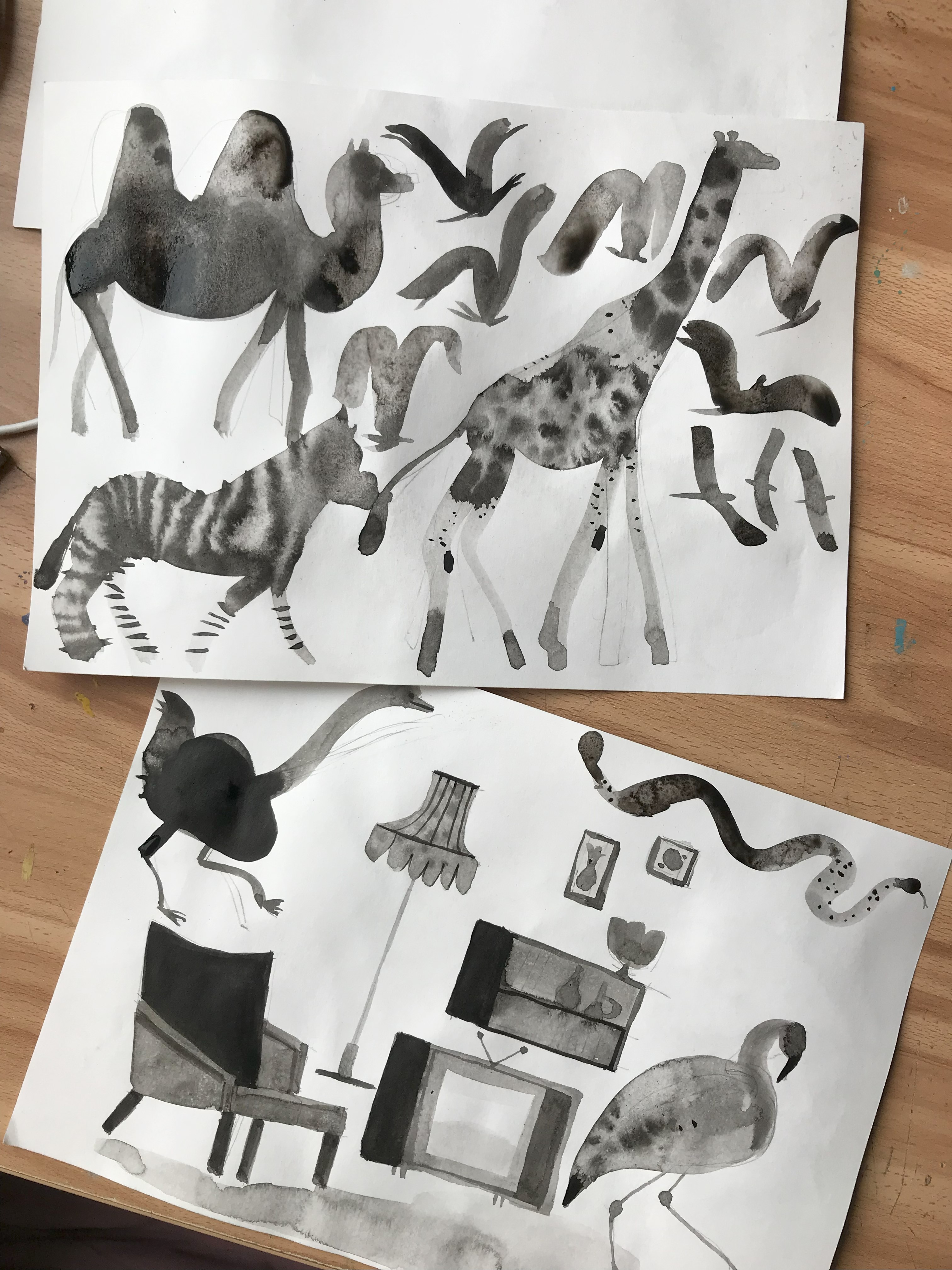
She continues: "I like mixing blues and greens and combining translucent textures (like ink and watercolour) with more thick ones (like gouache). Also charcoal helps adding the final touches, smudges, shading."
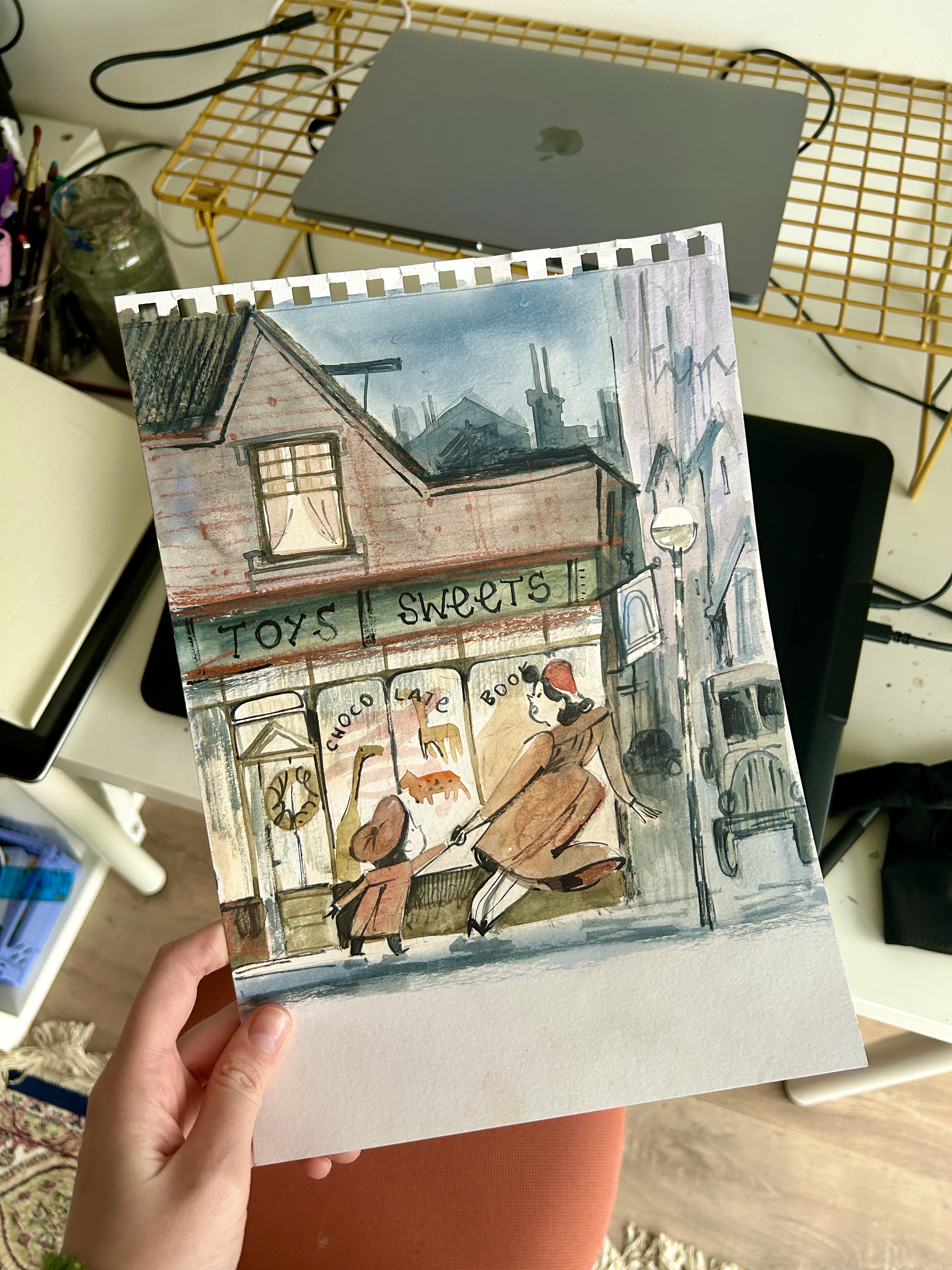
I ask Valerya how did you develop a sketchbook routine and how do you manage to stay consistent?
"I do carry a small sketchbook with me everywhere, but I still don't use it every time. It's nice to have it and draw on the way home after meeting with friends, or while waiting for a coffee and a bun, or at the busy London pub where people won't notice you are spying on them," she says.
She then adds: "I think I can work on being more consistent with my sketchbook practice, as sometimes I just don't have the energy to create after working on books."
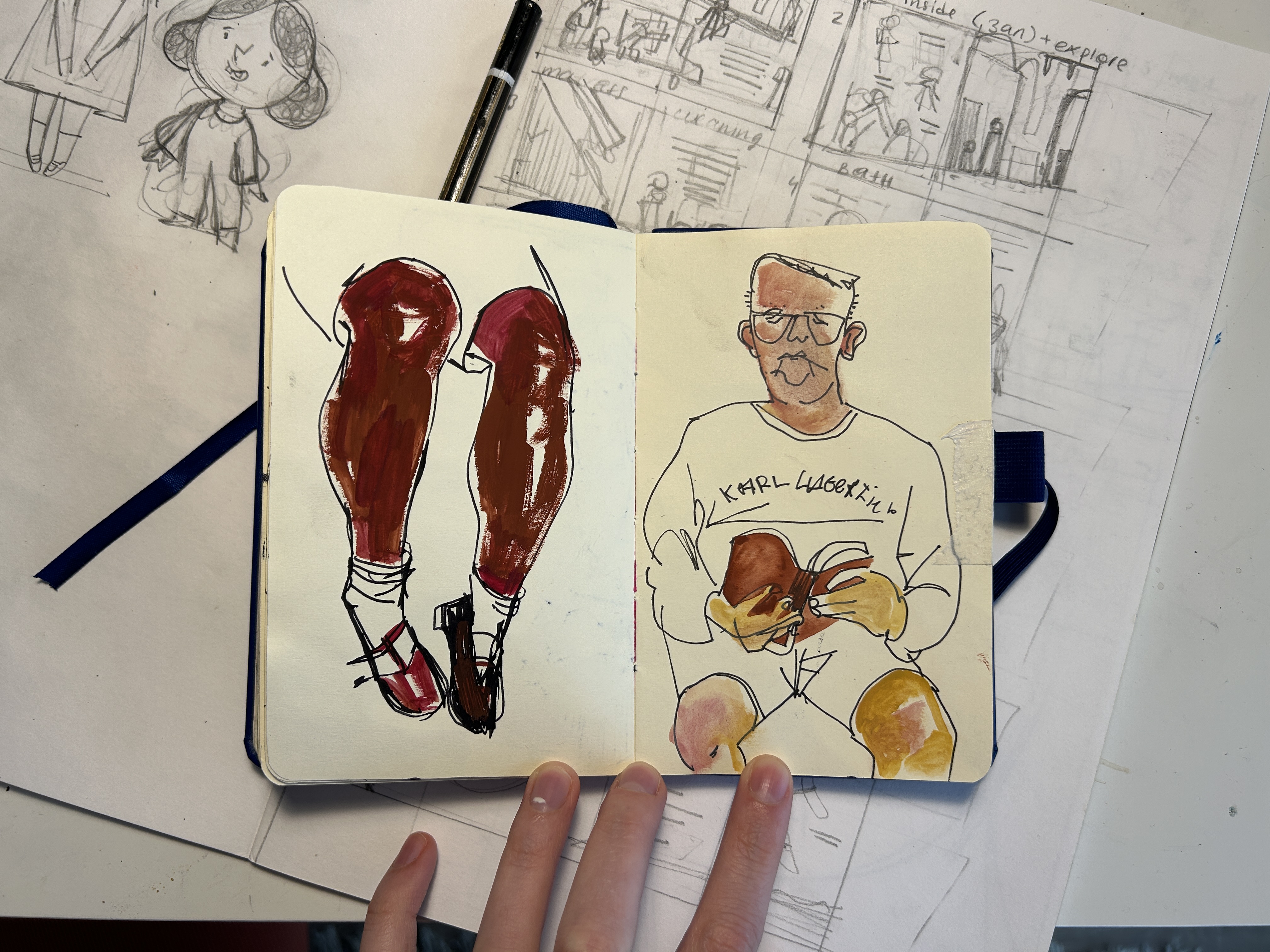
I ask her about her sources of inspiration, "It could be something I saw on my walk, a picture I took, a film, or a book," Valerya says.
But what if you can't come up with anything? "The ideas come to me when I'm most relaxed, so I try to not force myself into creating but rather allow myself to rest, and observe the world around me freely," reflects Valerya.
She adds: "Sometimes I search for references online – I often find a picture that inspire me on Pinterest, and then I think of my own way of interpreting the same narrative, colour palette, composition, or whatever caught my eye."
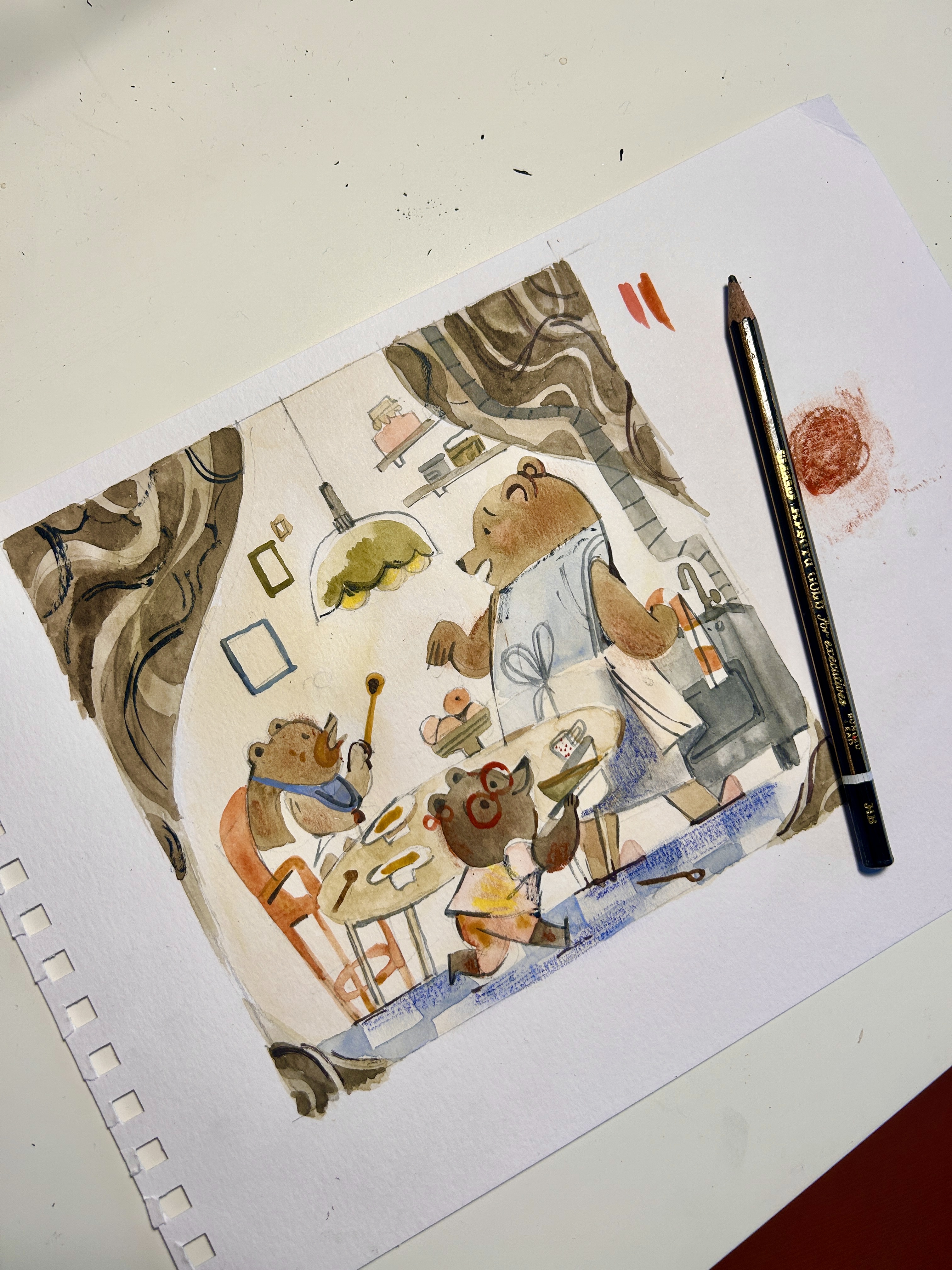
I ask Valerya to point out her favorite pages, ''Definitely the most spontaneous ones, where I drew quickly, trying to grasp the form and the character of a person," she says.
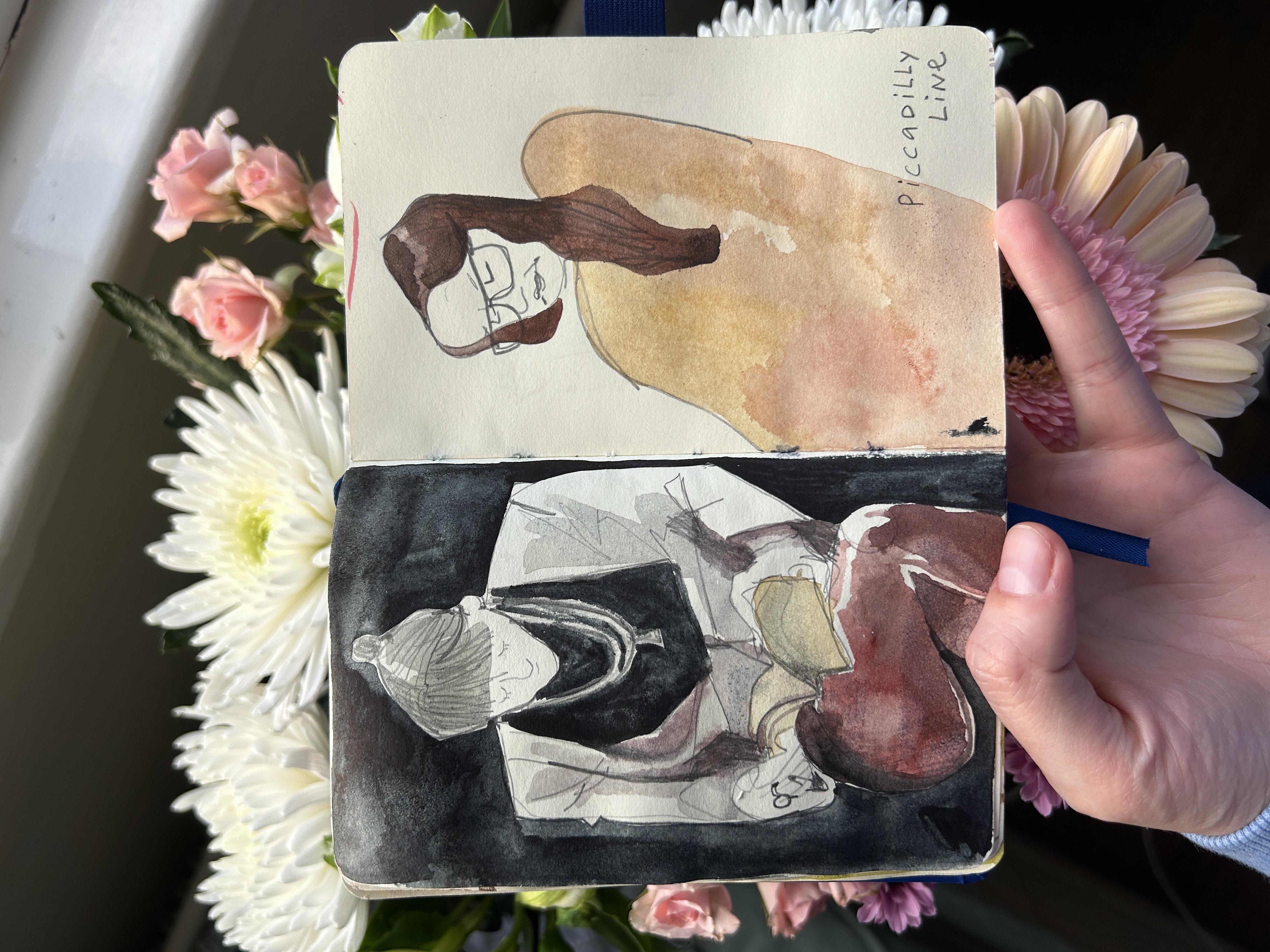
"Here I was not actively thinking about the strokes or the materials, but rather about capturing the unexpected gesture, emotion, and posture. I sketched these people on my way home in the underground, and coloured them later," she describes.
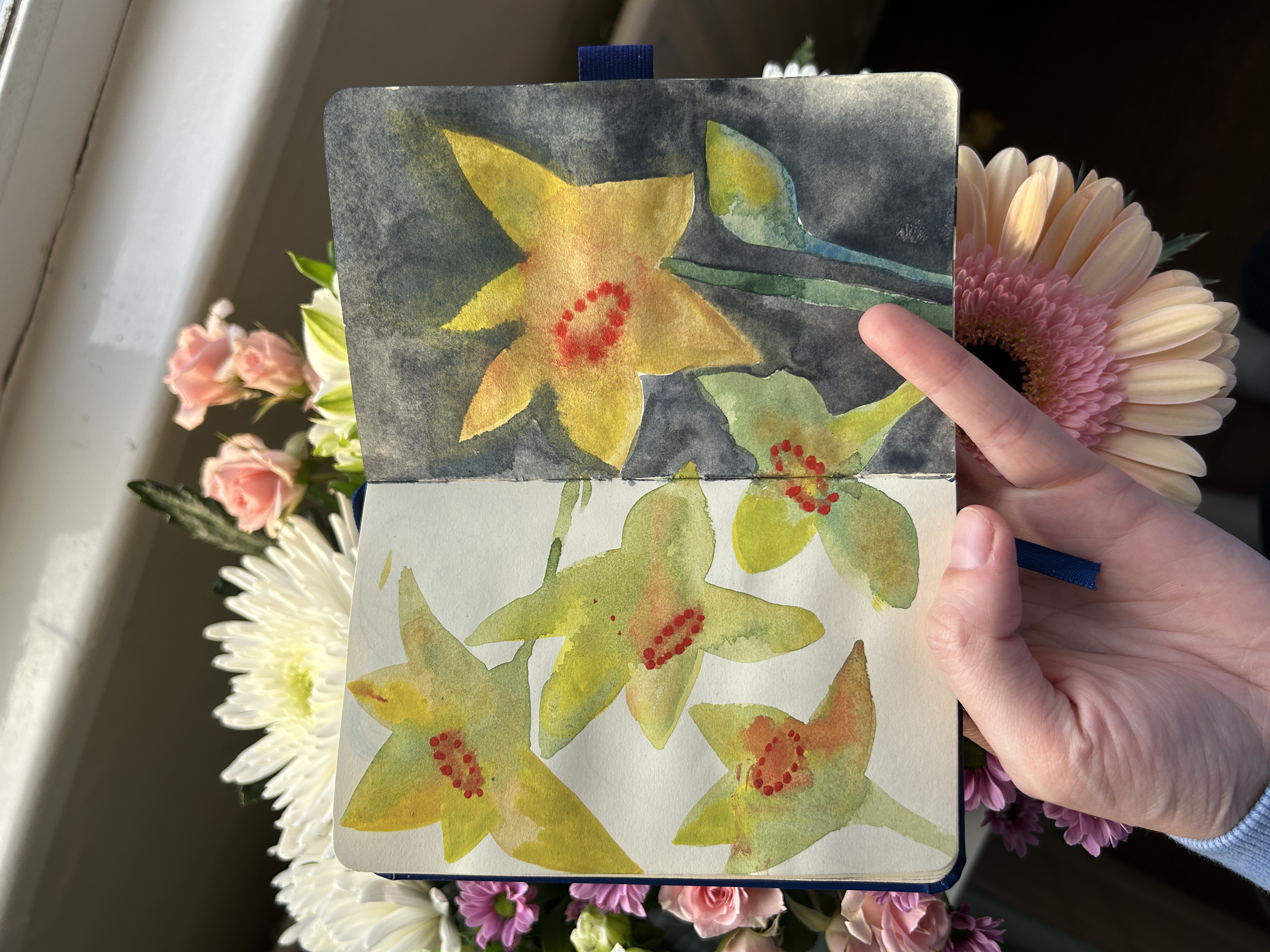
Valerya says, "I think I managed to capture the essence of the flowers without overworking them, love the looseness and textures!" (You can find more of them on Valerya's Instagram page.)
Artists usually have more than one sketchbook so I want to know how many sketchbooks Valerya uses at a time. And which are the goals for each of them?
"I currently have two main sketchbooks," Valerya says, then adds: "One is a tiny A6 book with thinner paper that I take everywhere. It is mainly for the people watching in the underground, at the cafe, or during art fairs. It also sometimes works for testing the materials."
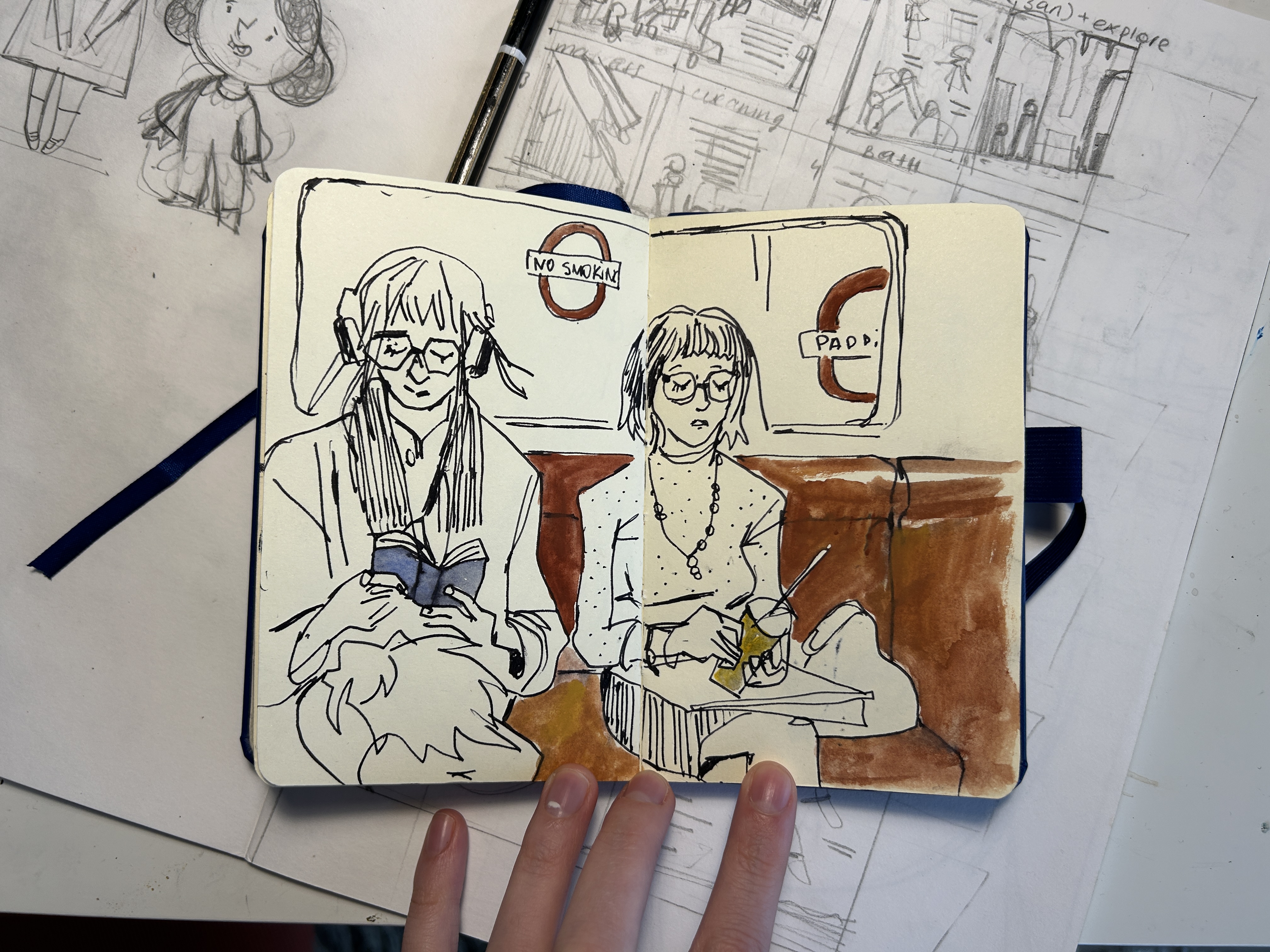
She continues: "The other sketchbook is not a sketchbook at all, or at least when I'm finished with it. It starts with an A4 mixed media pad, where I draw the textures, backgrounds, and separate characters for the books."
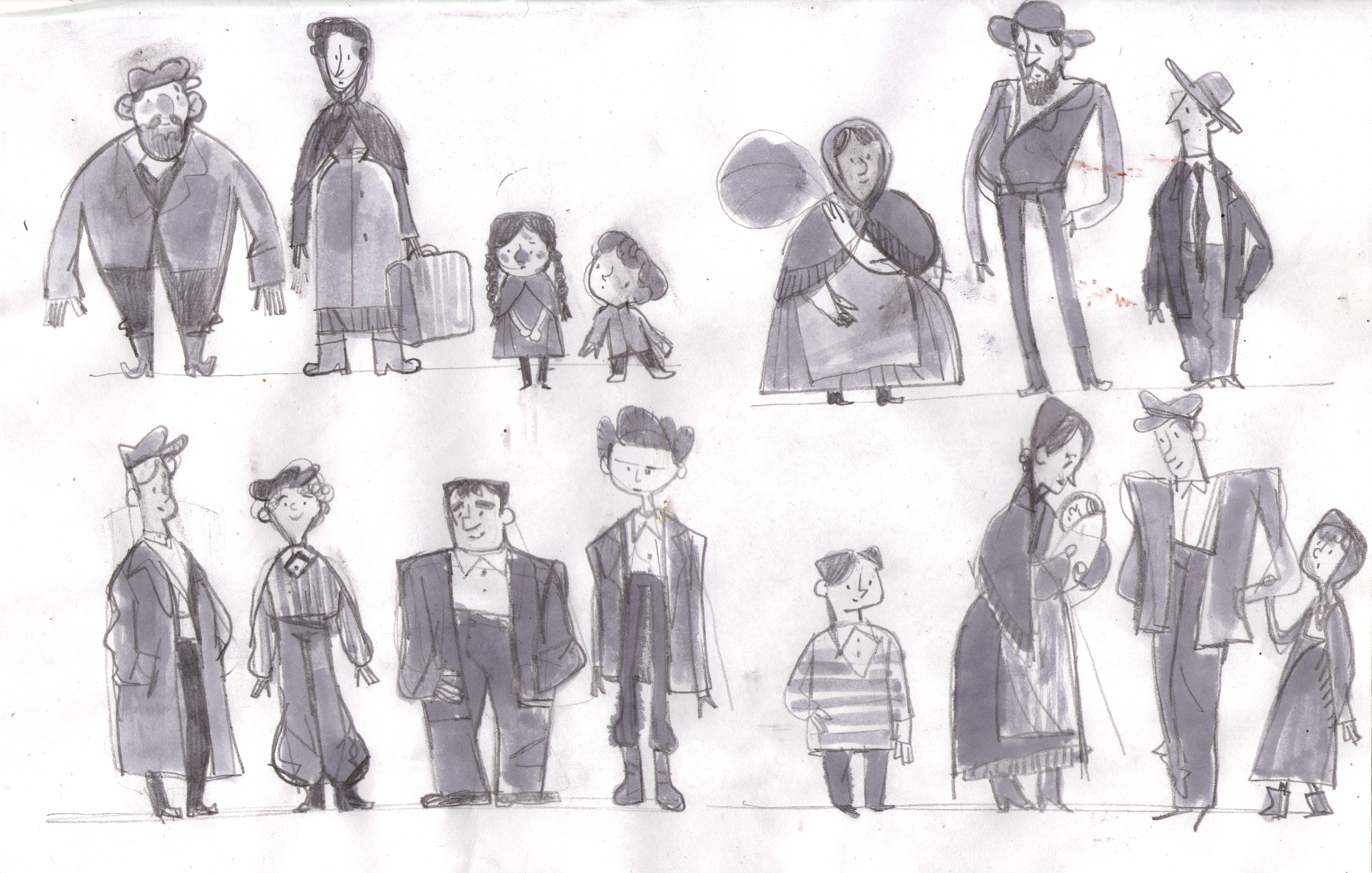
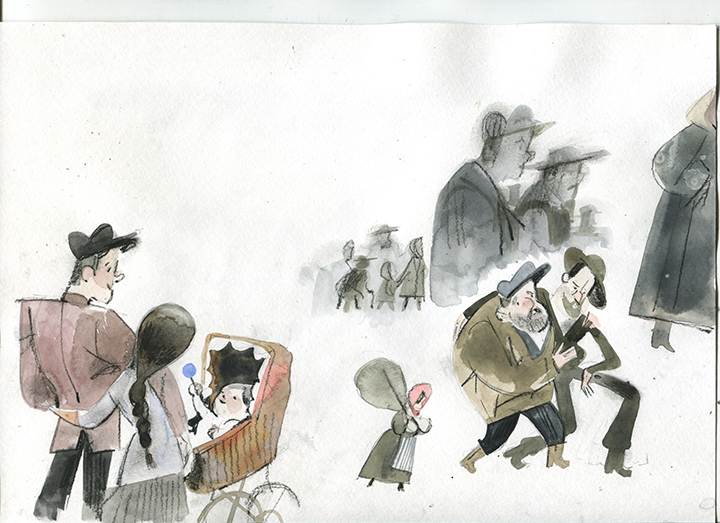
She says: "Here I did a lot of character sketches for the Your Marvellous Masterpiece picture book. I've also created many ink textures that were later scanned and applied to the final illustrations in Procreate. As I need to scan the pages one by one I tear the pad apart, and thus I have a collection of A4 pages just lying around."
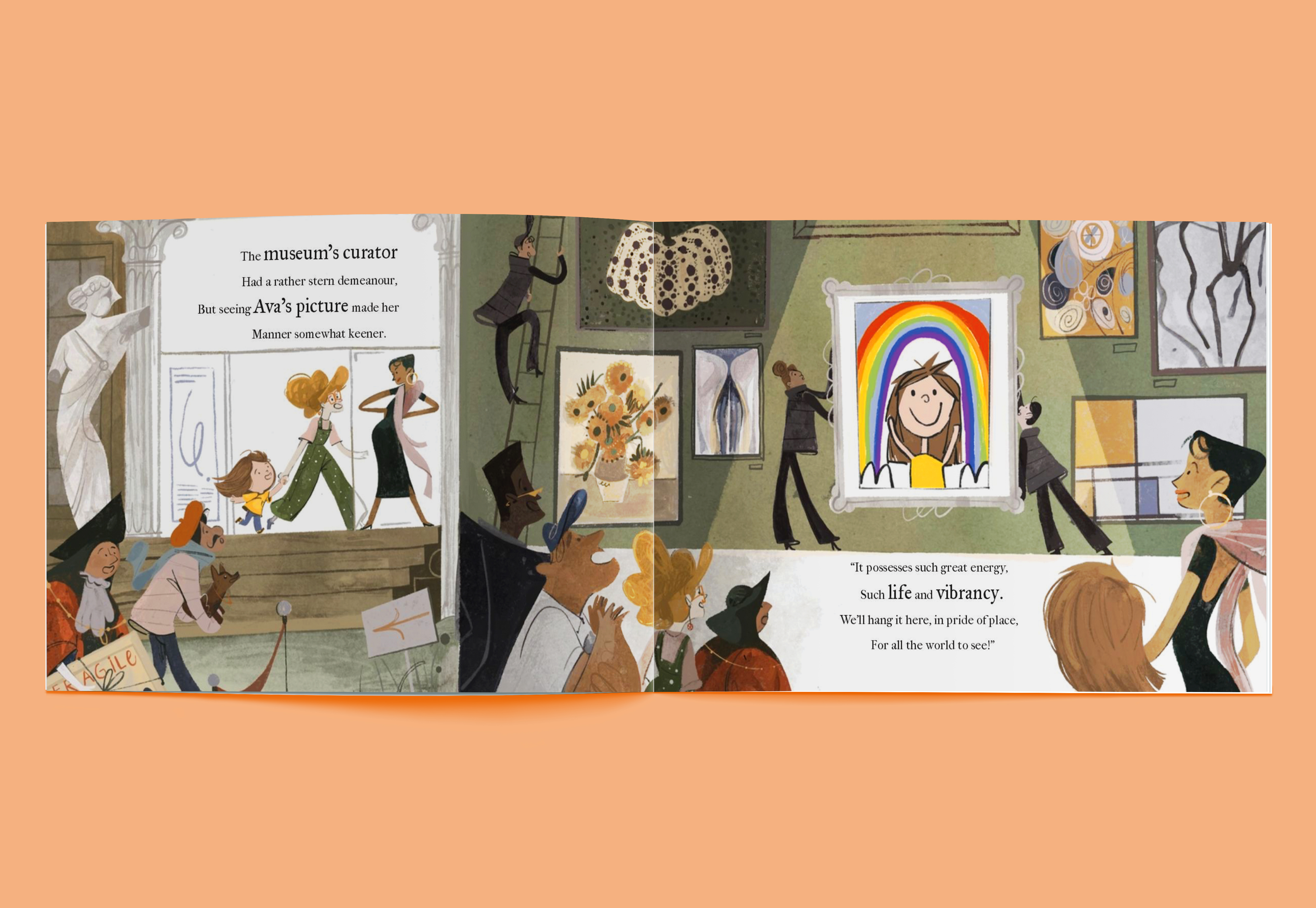
But it hasn't been always like that. "Back when I was a child and just started learning how to draw independently from the art school, I had a huge collection of sketchbooks and I used to finish them in a month or two. I was so motivated to learn all the techniques, play with the materials, and explore what styles I could do that I made a rule for myself – no starting a new sketchbook until the current one was finished, that way I was committed and motivated, and got a sense of accomplishment after each one," Valerya adds.
There are many sketchbook challenges going on on social media at the moment, so I'm curious to know if she took part in any of these.
"I have participated in a few of them over the years. But I think I have only finished one - the Inktober. I guess working with ink and B&W materials has its own limitations, and having those limitations helps overcome the fear of imperfection. With fewer choices to agonise over – no colours to blend, no complex mediums to experiment with, I'm forced to focus on the essentials: composition, contrast, and line work. Instead of getting stuck on making everything "perfect," I just keep moving forward, embracing the spontaneity of ink."
She continues: "The Mermay or Peachtober challenges just didn't stick – too much pressure and freedom for everyday drawings, especially if you have illustration work besides the challenge.
"I did actually create a few of my own sketchbook challenges – like drawing women in different outfits for 30 days or painting simple ink images and printing them on Riso right away. These helped me stay consistent, and the themes were something I was truly interested in."

I ask Valerya what skills she has improved the most by practicing consistently in her sketchbook?
"Line confidence and the ability to observe and capture shapes quickly are the biggest skills I've improved the most. The more I sketch, the less hesitant my strokes are. I’ve learned to trust my hand and commit to marks without overthinking. And I've learned to trust the materials and allow the 'happy mistakes' to happen, as they make the final piece more genuine, more unexpected, and surprising even for me."
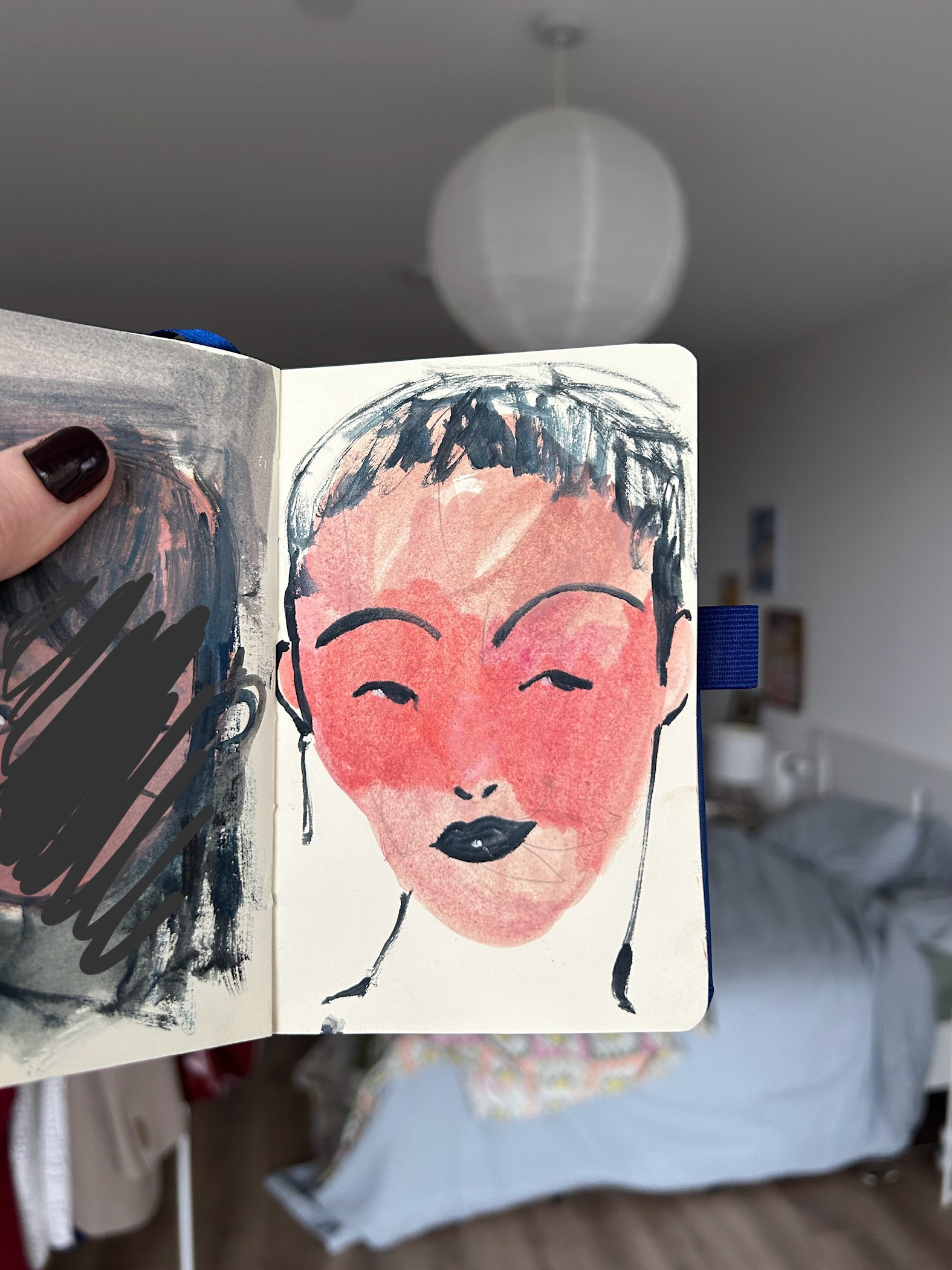
Inspired by Valerya Milovanova? Then read Madalina's interview with animator Jason Chan P.L., who open up his sketchbook. Also, read our guide to the best sketchbooks for artists to pick up a new one, or if you're going digital, read our list of the best tablets with a stylus for drawing and note-taking.

I'm Madalina Buzenchi (aka madalinartz), an illustrator based in Italy. She is picture book passionate. As a self-taught artist, talking to other artists in the field and listening to their journey and advice has played a crucial role in shaping my path and art skills.
You must confirm your public display name before commenting
Please logout and then login again, you will then be prompted to enter your display name.
